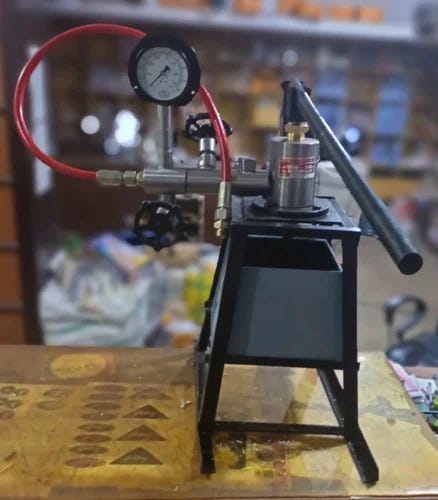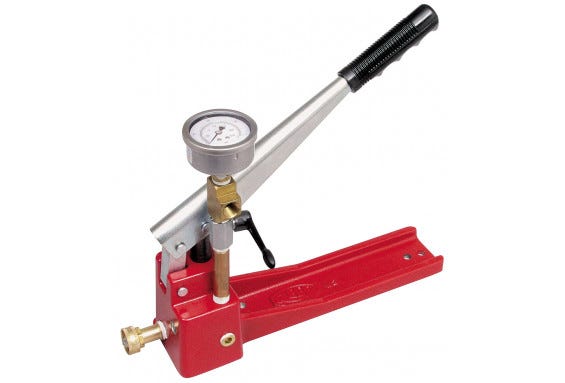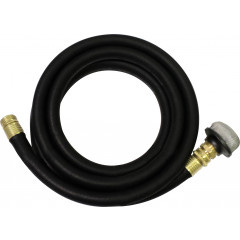Introduction to Pump Hydrostatic Pressure Testing
Learn about hydrostatic pressure testing for centrifugal pumps, including its purpose, standards like API 610 and ASME BPVC, best practices, and key components.
Introduction
Ensuring the safety and reliability of centrifugal pumps is essential for industrial operations. A critical step in this process is hydrostatic pressure testing, often called hydro-testing. This testing method ensures that the major pressure-containing parts of a pump can withstand operational stresses without failure. By following established standards and applying best practices, companies can avoid costly failures, enhance safety, and ensure compliance with industry requirements.
In this article, we will explore hydrostatic pressure testing in depth. You will learn about its purpose, the components involved, how it aligns with key standards like API 610 and ASME, and best practices for conducting the test safely and effectively.
What is Hydrostatic Pressure Testing?
Hydrostatic pressure testing is a non-destructive test used to verify the structural integrity of pumps. In simple terms, this involves filling the pump with liquid—typically water—and pressurizing it beyond its maximum expected operating pressure. This ensures that the pump can handle the conditions it will face in real-world operations.
The test is often performed at 1.5 times the pump's maximum allowable working pressure (MAWP) unless otherwise specified. During the test, components like the casing, cover, nozzles, and other pressure-bearing parts are closely monitored for any signs of leaks, seepage, or deformation.
Hydrostatic testing is not just a technical requirement; it is a critical safety measure that protects personnel, equipment, and the environment from catastrophic failures.
Why is Hydrostatic Testing Important?
Hydrostatic testing serves several important purposes. It is not just about ticking a box for compliance; it provides tangible benefits:
Ensures Safety
Testing confirms that the pump can safely operate under its maximum pressure. This gives operators confidence in their reliability and reduces the risk of accidents.Validates Design Integrity
The process verifies that the pump’s design and materials can withstand expected stresses. This is particularly important for components like casings and covers, which bear the brunt of operational pressures.Detects Manufacturing Defects
Hydrotesting can reveal issues like casting flaws, welding defects, or material weaknesses that might not be visible during visual inspections.Builds a Safety Margin
By testing at pressures higher than the pump's normal operating pressure, hydro-testing provides a safety buffer, reducing the likelihood of failure during unexpected pressure spikes.Meets Industry Standards
Compliance with standards like API 610 (for centrifugal pumps) and ASME BPVC Section VIII ensures the pump meets industry benchmarks for performance and safety.
The Difference Between MAWP and MWP
Understanding the terms Maximum Allowable Working Pressure (MAWP) and Maximum Working Pressure (MWP) is crucial for anyone involved in pump testing or operation.
MAWP refers to the maximum pressure the pump is designed to handle safely, as determined by its construction and materials. It is a design limitation.
MWP, on the other hand, refers to the maximum pressure the pump is expected to experience during operation. It is a system-related parameter.
Hydrostatic testing is performed based on the pump's MAWP, not its MWP. The test pressure is typically 1.5 times the MAWP, ensuring the pump has a robust safety margin.
Key Standards Governing Hydrostatic Testing
Two major standards guide hydrostatic pressure testing for pumps: API 610 and ASME BPVC.
API 610: Centrifugal Pump Standards
API 610 is a widely recognized standard for centrifugal pumps. It specifies:
Test pressures of 1.5 times the MAWP unless otherwise agreed upon.
Procedures for incremental pressurization to reduce risks during testing.
Guidelines for post-testing inspections and documentation.
ASME BPVC: Boiler and Pressure Vessel Code
ASME BPVC Section VIII provides detailed requirements for pressure vessels and pressure-containing equipment. Key points include:
The use of appropriate test media (usually water).
Temperature correction factors for materials tested under elevated temperatures.
Safety protocols for conducting tests in a controlled environment.
Compliance with these standards ensures the pump meets both performance and safety requirements.
Components Tested in Hydrostatic Testing
Not all parts of a pump are subject to hydrostatic testing, but the critical pressure-bearing components must be tested thoroughly. These include:
Casing
The casing is the main pressure-containing body of the pump. Any weakness here could lead to catastrophic failure.Cover
The cover seals the casing and is often exposed to the same pressure levels. It must be tested for leaks and structural integrity.Nozzles
These are the entry and exit points for the fluid. They must withstand the pressure and remain leak-free.Stuffing Box and Outer Barrel
These components may also be tested, especially if they are part of the pressure boundary.Auxiliary Components
Elements like cooling jackets or auxiliary piping may require testing, though often at lower pressures.
Best Practices for Conducting Hydrostatic Testing
Hydrostatic testing is not just about applying pressure; it involves meticulous planning and execution. Here are some best practices to ensure accurate results and safety:
1. Use Incremental Pressurization
Start with lower pressure levels (e.g., one-third and two-thirds of the target pressure) before reaching the full test pressure. This helps identify potential issues early and reduces the risk of sudden failure.
2. Select the Right Test Medium
Water is the most common test medium, but in some cases, a different liquid like kerosene may be used. Adding a wetting agent or dye can improve visibility for leak detection.
3. Ensure a Safe Testing Environment
Conduct the test in a secure area accessible only to authorized personnel. All workers must wear appropriate protective gear.
4. Follow Post-Test Procedures
After a successful test, machine any critical fits that might have shifted during the test. This prevents dimensional inconsistencies that could affect performance.
5. Document Everything
Maintain a detailed hydrostatic test report. This should include information about the test pressure, duration, temperature, and any observations.
Common Mistakes to Avoid
Even experienced professionals can make mistakes during hydrostatic testing. Here are some pitfalls to watch out for:
Ignoring Temperature Effects
Materials behave differently at elevated temperatures. Always use temperature correction factors when testing pumps designed for hot fluids.Rushing the Process
Pressurizing too quickly can lead to catastrophic failures. Always follow the incremental pressurization approach.Using Improper Test Media
The wrong test medium can damage the pump or give inaccurate results. Stick to the recommendations in API and ASME standards.
Importance of Re-Hydrotesting
Hydrostatic testing is not a one-time process. Re-hydro testing may be required in several situations:
After repairs or modifications that affect the pressure boundary.
If the pump’s operating conditions (e.g., pressure or temperature) have changed.
When the pump has been in service for a long time, its casing may have weakened.
Re-hydro testing ensures the pump remains safe and reliable over its lifespan.
Enhancing Reliability Through Hydrostatic Testing
Hydrostatic pressure testing is a vital step in ensuring the safety, reliability, and longevity of centrifugal pumps. By adhering to established standards like API 610 and ASME BPVC, and following best practices, companies can minimize risks and enhance operational efficiency.
If you're involved in pump maintenance or procurement, make hydrostatic testing a priority. Proper testing not only ensures compliance but also protects your investment and keeps your operations running smoothly. Stay informed, follow the standards, and always prioritize safety.






